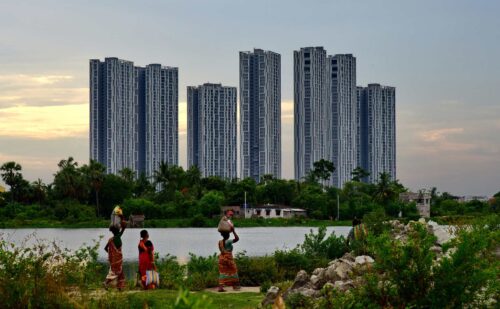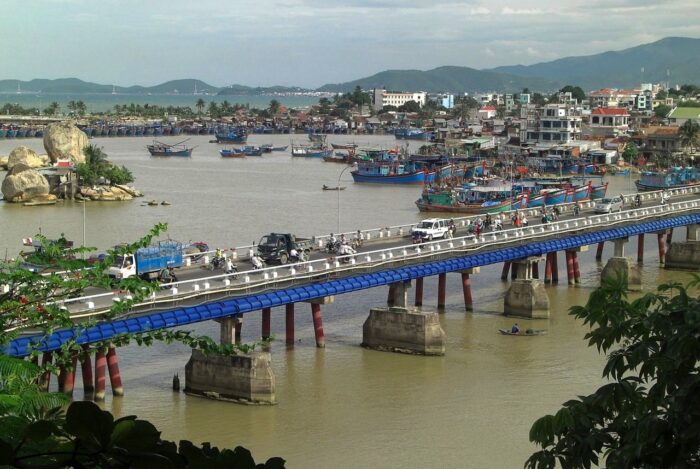Strengthening the Resilience of Cities is Essential, and Smart

New USAID Urban Resilience Programming Guidance Released
USAID is pleased to announce the release of new technical guidance for developing and implementing activities that strengthen the resilience of cities and urban communities. The new guidance provides evidence-based, practical recommendations for programming across a variety of sectors in urban settings. It was developed for use by USAID staff, implementing partners, and others working to improve development outcomes by strengthening urban resilience.
USAID defines resilience as the ability of people, households, communities, cities, countries, and systems to mitigate, adapt to, and recover from shocks and stresses in a manner that reduces chronic vulnerability and facilitates inclusive growth.
Why Focus on Urban Resilience?
Cities are already home to more than half of the world’s population, with the proportion expected to rise to almost 70 percent by 2050. This trend benefits billions through greater economic opportunity, higher wages, and access to services. However, these benefits are not afforded equally and for many access to a better life is impeded by where they live within or adjacent to the city. Shocks and stresses linked to climate change, pandemics, conflict, income inequality, migration, and other sources are disrupting the livelihoods, health, housing, and quality of life of urban residents.
Poorer populations in cities are particularly vulnerable. For example, approximately 90 percent of the world’s urban areas are coastal, exposing residents, particularly those living in informal settlements, to risks of flooding and sea level rise, while over 200 million people are estimated to be living in cities under extreme heat conditions.

Building urban resilience helps cities mitigate, adapt to, and recover from current and future shocks and stresses – thus saving lives, reducing losses, and unlocking economic and social potential. For example, investments in green infrastructure such as urban forests or restoring coastal wetlands can reduce the urban heat island effect, flooding, and the impacts of storm surges, while also reducing exposure to noise and air pollution.
Strategies and Actions to Strengthen Urban Resilience
The increasingly intense and complex nature of shocks and stresses facing cities have causes and impacts that cut across USAID’s traditional programming areas. The Urban Resilience Technical Guidance includes a set of building blocks, program examples, and illustrative activities to strengthen resilience in cities and urban communities.
Urban systems include communities, infrastructure, the natural environment, cultures, norms, and policies within a city. The five building blocks in the guidance represent cross-cutting approaches to strengthen the resilience of key urban systems through:
- Inclusive Planning – Engage in participatory, evidence-based, regularly updated planning processes that account for future risk. This can include supporting inclusion of particularly vulnerable and typically left-out groups, an understandable and locally specific evidence base, and a transparent and robust consultation process with relevant communities.
- Governance – Strengthen the governance capacity of cities. This may include improving and enforcing land use, zoning and other plans and regulations; improving community engagement; and strengthening communication, transparency, and accountability.
- Finance – Unlock financial capital and budget for resilience. This often focuses on strengthening the financial management capacity of cities and helping them access the appropriate financial capital—both public and private—for the physical and social infrastructure needed to support resilience.
- Social Capital – Build and strengthen networks of relationships and bonds within and across communities. This may include redesigning public spaces to encourage interactions that build community among residents, or strengthening the capacity of civil society organizations, including those serving youth, women, local religious communities, and marginalized populations, to be aware of, and respond directly to, community needs.
- Natural Capital – Restore and protect the natural systems that contribute to resilience. This may include investments in open space, forests, biodiversity, and wetlands, both inside and outside of the city’s boundaries— that can provide protection from shocks and stresses.
The document includes sector guides for Governance, Health, and Power, offering recommendations for applying an “urban resilience lens” to program design in these sectors, alongside strategies for integrated programming.
The Urban Resilience Technical Guidance, sector guides, as well as additional resources are available on the new urban resilience platform on USAID’s UrbanLinks website.
Please send questions or requests related to the new guidance to:
- Monica Bansal, Green Cities Division Lead, at: mbansal@usaid.gov
- Rebecca Chacko, Climate and Cross-sectoral Strategies, at rchacko@usaid.gov
About the Urban Resilience Technical Guidance
The Urban Resilience Technical Guidance was developed by a cross-sectoral team of USAID staff from the bureaus for Development, Democracy and Innovation (DDI), Resilience and Food Security (RFS), Global Health, and Asia region, including the Green Cities Team and Center for Democracy, Human Rights and Governance (DRG Center). The process included input and consultations with the USAID Urban Resilience Working Group, as well as interviews with more than 50 USAID staff from Missions in the Asia, Africa, Latin America & Caribbean (LAC) and Middle East & North Africa (MENA) regions, and DC-based regional bureaus and technical operating units.
The guidance supports and complements key USAID priorities outlined in the USAID Climate Strategy, the retired Urban Policy, Local Capacity Strengthening Policy, Environment and Natural Resources Management (ENRM) Framework, and other related guidance. These priorities include, for example, a focus on equity and inclusion, a central role for local actors in development processes, democracy, conserving and restoring natural capital, and the importance of taking a systems-based approach.

